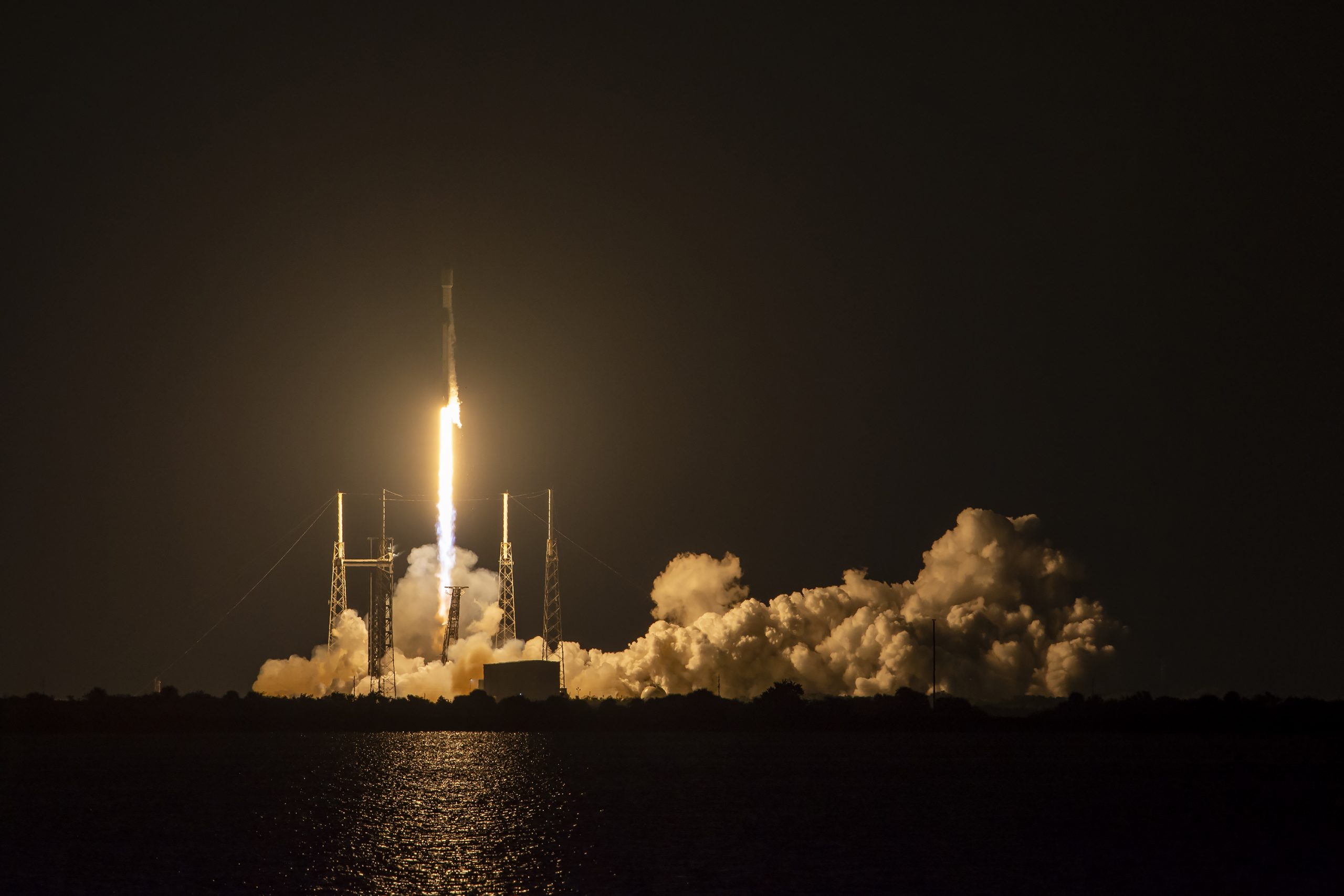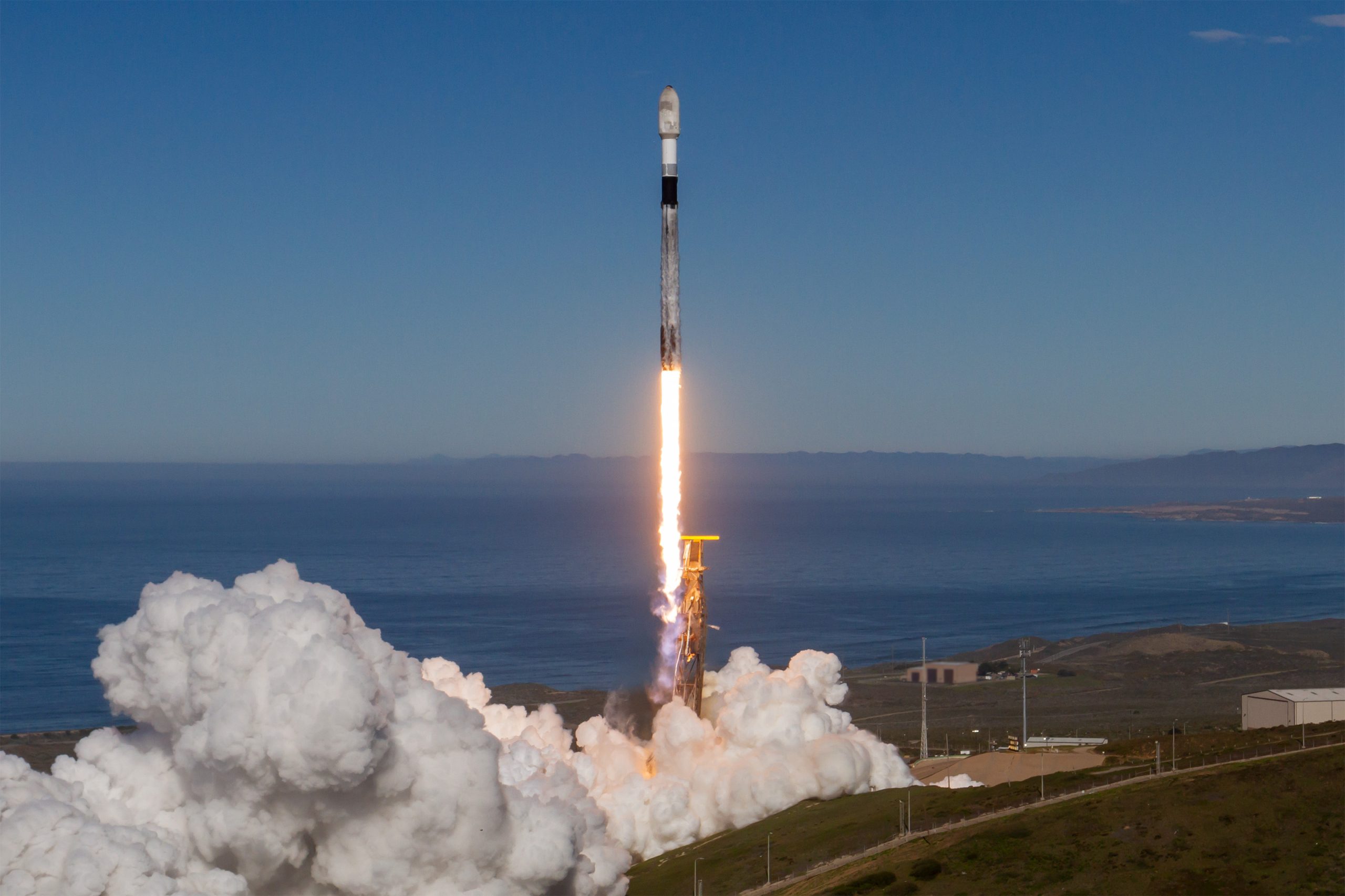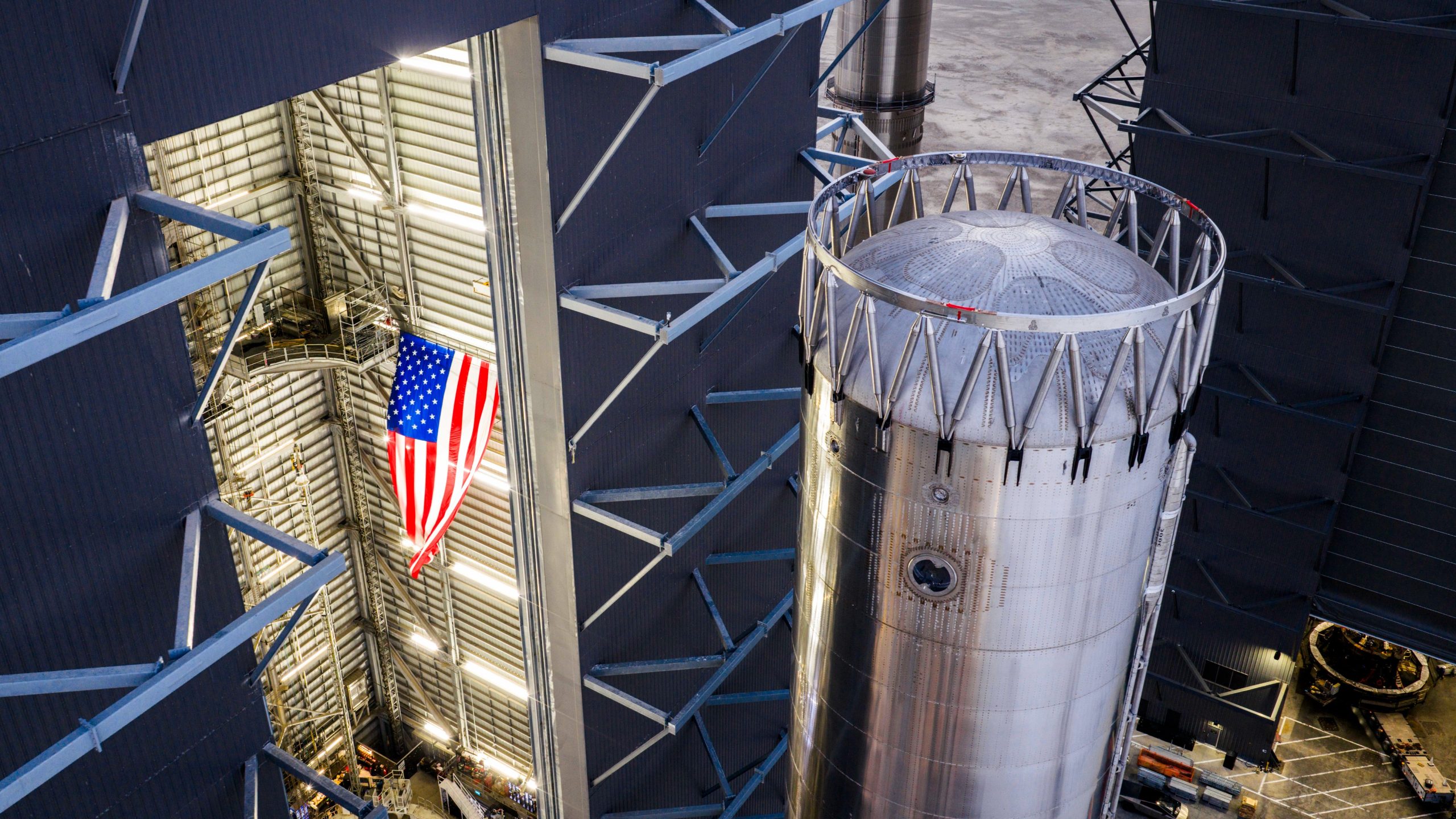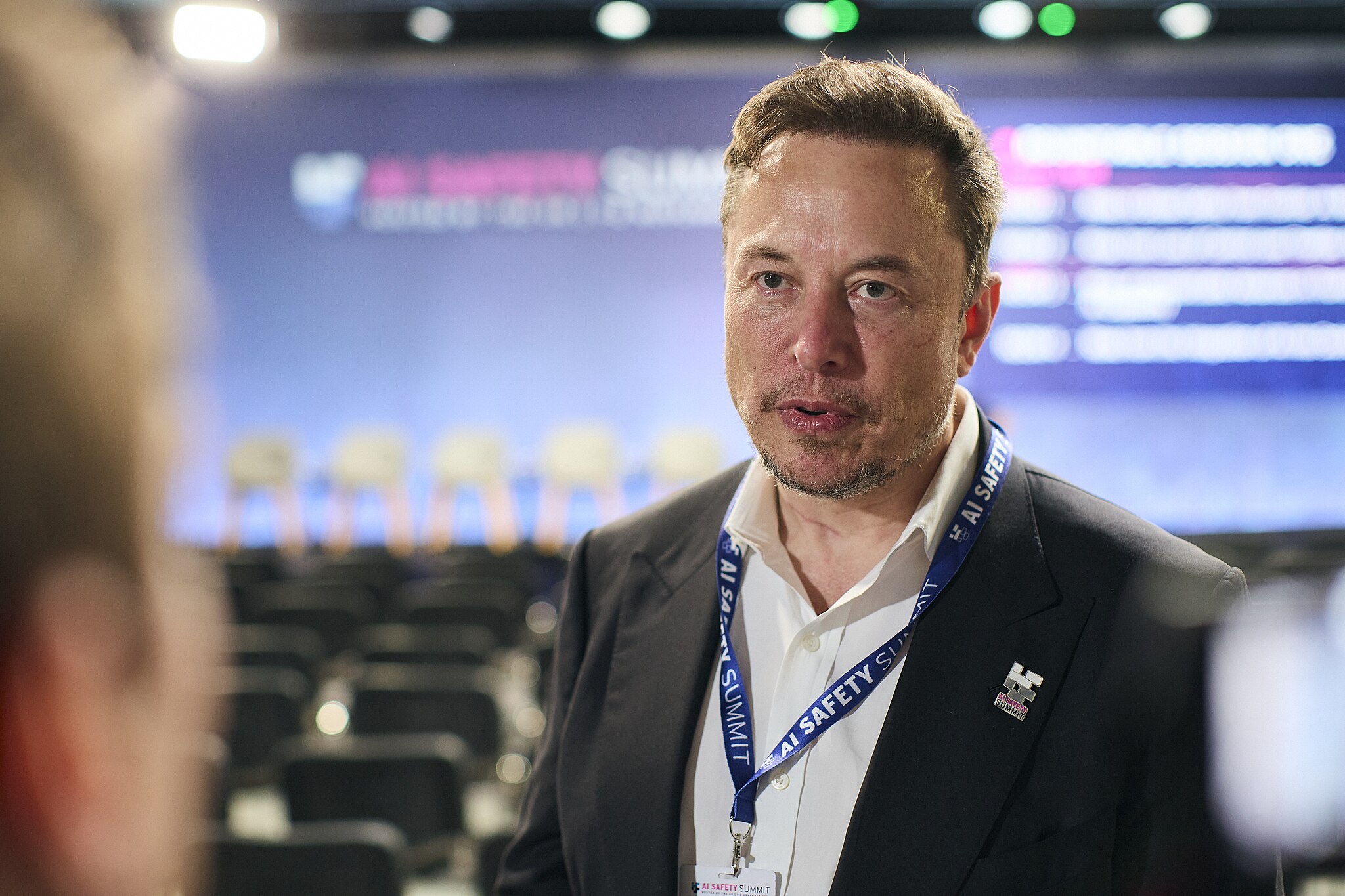SpaceX
Ukraine seeks Starlink alternatives from the EU

Ukraine is exploring EU satellite alternatives to Starlink, driven by concerns over Elon Musk’s unpredictability. Starlink remains vital for Ukraine’s battlefield connectivity and cannot be easily replaced. While the European Union has started developing Starlink alternatives, they have not quite reached SpaceX’s capacity to provide internet connection.
Starlink’s Critical Role and Vulnerabilities
Starlink’s 7,000+ satellite network provides essential connectivity for Ukraine’s military. However, SpaceX CEO Elon Musk’s influence has raised strategic concerns.
“Elon Musk is, in fact, the guardian of Ukraine’s connectivity on the battlefield. And that’s a strategic vulnerability,” warns Arthur De Liedekerke, Senior Director of European Affairs for Rasmussen Global.
Opinions of Musk have started to influence dealings with any of his companies, including SpaceX and Tesla. Starlink has not escaped criticism due to its relationship with Musk, resulting in a few governments seeking alternatives to SpaceX’s internet services.
For instance, the German military has announced plans to develop a Starlink alternative. Kyiv and the EU are also seeking options to reduce reliance on Starlink.
EU’s Govsatcom as a Near-Term Option
Member of the EU Parliament (MEP) Christophe Grudler pitched the European Union’s Govsatcom system as a viable alternative to Starlink for Ukraine.
“It is clear that if Starlink decides to cut the signal today, we have options, in particular with Govsatcom, which is the European network that we have brought into service and which, from June, will make it possible to supplement Starlink’s missing signal in Ukraine, if necessary,” he said.
Grudler affirmed: “The European Union is very committed to helping Ukraine, so there would certainly be agreement from all the Member States to come to Ukraine’s aid if it no longer had a Starlink signal in the future.”
However, De Liedekerke pointed out that GovSatcom was made for government use. He noted that “GoveSatcom is a governmental secure satellite communications and it’s essentially to provide reliable, secure, strategically autonomous networks for communication services between governments in the EU. It couldn’t replace the kind of battlefield connectivity that we’re discussing for Ukraine. So it’s not a silver bullet at the moment.”
Eutelsat’s Competitive Edge
Eutelsat, a Franco-British operator, offers a low-Earth orbit network with 630 satellites and 35 geostationary ones, though it trails Starlink’s scale. It has 2,000 terminals deployed in Ukraine and 14,000 more planned to deploy. Starlink has 40,000 terminals in Ukraine, used by the military and civilians.
Price is another factor to consider when seeking a Starlink alternative. Eutelsat’s €9,000 terminals are pricier than Starlink’s €500 units.
“Eutelsat is our European champion, one that has convincing functioning solutions. And one that we need to be able to support through funding and political will,” De Liedekerke said, noting its political independence from the U.S.
Iris2 as a Future Solution
The EU’s Iris2 project is another Starlink alternative Ukraine might consider. The Iris2 project is a 290-satellite constellation, promising secure, low-latency connectivity by 2030, with partial operations by 2028.
“From 2028, we will have an operational Iris2 constellation that will be able to provide telecommunications services to all the Member States that so wish. I would add that this will be the first time we have had a constellation secured with post-quantum cryptography, so cyber-attacks will not be possible on this constellation. It will be a world first with an ultra-secure signal, which is not the case with the Starlink signal either,” Grudler said. ‘
Led by the SpaceRISE consortium, Iris2 offers a long-term alternative, though its timeline limits immediate impact.
Strategic Diversification
De Liedekerke has stressed the need for options aside from Starlink.
“It’s about having options. It’s about not having a single point of failure. It’s being able to say no to one and still be online. And today, we’re not in a situation where we can do that. We’ve let Ukraine’s war zone connectivity be in the hands of one man…that’s a strategic vulnerability.
By having options, by having alternatives, by diversifying our partnerships, we avoid that single point of failure.”
Ukraine’s pursuit of EU solutions aims to ensure battlefield resilience. However, the EU has some way to go before it can match Starlink’s reach.

Elon Musk
Elon Musk gives nod to SpaceX’s massive, previously impossible feat
It was the booster’s 30th flight, a scenario that seemed impossible before SpaceX became a dominant force in spaceflight.

Elon Musk gave a nod to one of SpaceX’s most underrated feats today. Following the successful launch of the Transporter-15 mission, SpaceX seamlessly landed another Falcon 9 booster on a droneship in the middle of the ocean.
It was the booster’s 30th flight, a scenario that seemed impossible before SpaceX became a dominant force in spaceflight.
Elon Musk celebrates a veteran Falcon 9 booster’s feat
SpaceX completed another major milestone for its Smallsat Rideshare program on Friday, successfully launching and deploying 140 spacecraft aboard a Falcon 9 from Vandenberg Space Force Base. The mission, known as Transporter-15, lifted off two days later than planned after a scrub attributed to a ground systems issue, according to SpaceFlight Now. SpaceX confirmed that all payloads designed to separate from the rocket were deployed as planned.
The Falcon 9 used for this flight was booster B1071, one of SpaceX’s most heavily flown rockets. With its 30th mission completed, it becomes the second booster in SpaceX’s fleet to reach that milestone. B1071’s manifest includes five National Reconnaissance Office missions, NASA’s SWOT satellite, and several previous rideshare deployments, among others. Elon Musk celebrated the milestone on X, writing “30 flights of the same rocket!” in his post.
Skeptics once dismissed reusability as unfeasible
While rocket landings are routine for SpaceX today, that was not always the case. Industry veterans previously questioned whether reusable rockets could ever achieve meaningful cost savings or operational reliability, often citing the Space Shuttle’s partial reusability as evidence of failure.
In 2016, Orbital ATK’s Ben Goldberg argued during a panel that even if rockets could be reusable, they do not make a lot of sense. He took issue with Elon Musk’s claims at the time, Ars Technica reported, particularly when the SpaceX founder stated that fuel costs account for just a fraction of launch costs.
Goldberg noted that at most, studies showed only a 30% cost reduction for low-Earth orbit missions by using a reusable rocket. “You’re not going to get 100-fold. These numbers aren’t going to change by an order of magnitude. They’re just not. That’s the state of where we are today,” he said.
Former NASA official Dan Dumbacher, who oversaw the Space Launch System, expressed similar doubts in 2014, implying that if NASA couldn’t make full reusability viable, private firms like SpaceX faced steep odds.
Elon Musk
SpaceX’s Starship program is already bouncing back from Booster 18 fiasco
Just over a week since Booster 18 met its untimely end, SpaceX is now busy stacking Booster 19, and at a very rapid pace, too.

SpaceX is already bouncing back from the fiasco that it experienced during Starship Booster 18’s initial tests earlier this month.
Just over a week since Booster 18 met its untimely end, SpaceX is now busy stacking Booster 19, and at a very rapid pace, too.
Starship V3 Booster 19 is rising
As per Starbase watchers on X, SpaceX rolled out the fourth aft section of Booster 19 to Starbase’s MegaBay this weekend, stacking it to reach 15 rings tall with just a few sections remaining. This marks the fastest booster assembly to date at four sections in five days. This is quite impressive, and it bodes well for SpaceX’s Starship V3 program, which is expected to be a notable step up from the V2 program, which was retired after a flawless Flight 11.
Starship watcher TankWatchers noted the tempo on X, stating, “During the night the A4 section of Booster 19 rolled out to the MegaBay. With 4 sections in just 5 days, this is shaping up to be the fastest booster stack ever.” Fellow Starbase watcher TestFlight echoed the same sentiments. “Booster 19 is now 15 rings tall, with 3 aft sections remaining!” the space enthusiast wrote.
Aggressive targets despite Booster 18 fiasco
SpaceX’s V3 program encountered a speed bump earlier this month when Booster 18, just one day after rolling out into the factory, experienced a major anomaly during gas system pressure testing at SpaceX’s Massey facility in Starbase, Texas. While no propellant was loaded, no engines were installed, and no one was injured in the incident, the unexpected end of Booster 18 sparked speculation that the Starship V3 program could face delays.
Despite the Booster 18 fiasco, however, SpaceX announced that “Starship’s twelfth flight test remains targeted for the first quarter of 2026.” Elon Musk shared a similar timeline on X earlier this year, with the CEO stating that “ V3 is a massive upgrade from the current V2 and should be through production and testing by end of year, with heavy flight activity next year.”
Considering that Booster 19 seems to be moving through its production phases quickly, perhaps SpaceX’s Q1 2026 target for Flight 12 might indeed be more than feasible.
Elon Musk
Elon Musk shares SpaceX’s directive that destroys a prevalent media narrative
Musk’s comments followed Starlink’s initiatives for people affected by severe flooding in Indonesia and Cyclone Ditwah in Sri Lanka.

Elon Musk recently shared SpaceX’s standing policy to offer free Starlink service during natural disasters worldwide, highlighting the company’s commitment to pursue aid over profit during times of need.
Musk’s comments followed Starlink’s initiatives for people affected by severe flooding in Indonesia and Cyclone Ditwah in Sri Lanka.
Starlink activates free service in Indonesia and Sri Lanka
Starlink recently announced free service for those impacted by severe flooding in Indonesia’s Sumatra region, partnering with the government to deploy terminals rapidly to the hardest-hit areas. The offer extends to new and existing customers through December, restoring connectivity in zones where traditional networks have failed due to infrastructure damage.
Musk quoted the post on X, writing, “SpaceX standard policy is to make Starlink free whenever there is a natural disaster somewhere in the world. It would not be right to profit from misfortune.”
Starlink extended the same relief to Sri Lanka amid Cyclone Ditwah, coordinating with local authorities for additional support. The cyclone battered the island nation with heavy rains and winds, disrupting communications for thousands. Free access also lasts until year-end, emphasizing Starlink’s role in bridging gaps during crises.
“For those affected by the severe flooding in Indonesia and Sri Lanka in the aftermath of Cyclone Ditwah, Starlink is providing free service to new and existing customers through the end of December 2025. We’re also working with the Indonesian government to rapidly deploy terminals and restore connectivity to the hardest-hit areas on Sumatra, as well as with the Sri Lankan government to provide additional assistance,” Starlink wrote in a post on its official website.
Musk’s companies routinely provide aid
Musk’s firms have a track record of providing critical support in crises, often without fanfare, challenging portrayals of him as a comic book villain intent on enriching himself on the backs of a suffering populace. In January 2024 alone, Tesla opened Superchargers for free in Japan’s Hokuriku region after a magnitude 7.6 earthquake killed at least 55 and injured hundreds.
Similar efforts include Starlink deployments for the 2023 Maui wildfires, 2024 Hurricane Helene in North Carolina, and floods in Texas, where the service was used to help facilitate emergency coordination. These actions, which total millions in waived fees and logistics, demonstrate a proactive ethos among Musk’s companies, with Musk noting in past interviews that such aid stems from engineering solutions over optics.
The initiatives also provide a direct rebuttal of Musk’s characterization on mainstream media, which tends to lean negatively. This has become much more notable in recent years as Musk adopted more conservative policies. These negative sentiments came to a head earlier this year when Tesla stores, vehicles, and even some owners, were attacked during waves of anti-Tesla protests.








